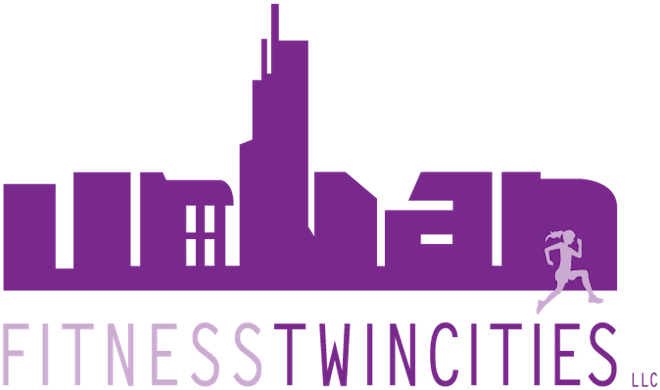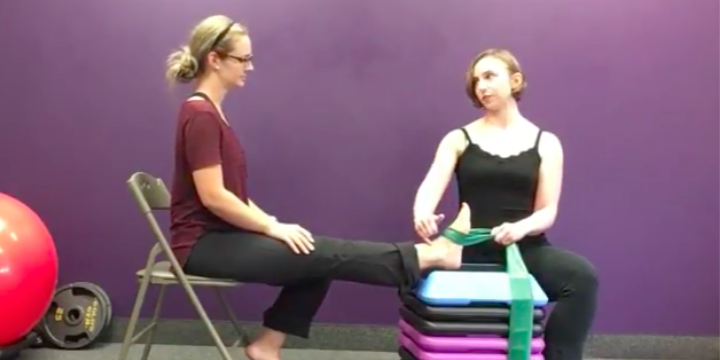Help improve your daily life by keeping your ankles strong!
If you haven’t had an ankle injury in a while you might forget just how crucial they are to many strength or cardio exercises! If you HAVE had an ankle injury lately, you know just how much it can limit your workout options and generally be a pain to work around. A little TLC for the ankle joint can go a long way toward injury prevention and might even open you up to more advanced exercises! It can also help prevent knee and hip injuries, improve balance, reduce general pain, and make everyday things like walking and standing easier.
In this video, we do two exercises. The first, foot flexes, helps to build strength in the top of the foot, front of the ankle and shin muscles. This exercise helps prevent shin-splints, is important for walking and can help reduce calf pain or tightness. The second exercise, ankle pulses out, helps to build strength in the outer ankle and lower leg. It is important for helping prevent ankle injuries such as sprained ankles and can even be used as a recovery exercise* for sprained or strained ankles (when the outside muscles were injured, which is the most common form of a rolled ankle).
Helpful tips for foot flexes (exercise 1):
- Keep the knee straight. If you can’t straighten your knee, we recommend putting a pillow or something underneath it to support it. If you can’t sit on the floor with your legs out in front of you and comfortably straight, do these in a chair (as shown) but put your foot on something lower than your hip so that you can comfortably straighten the knee.
- Keep calf muscles relaxed. Foot should start relaxed, then you flex it only as much as you can keep the calf from engaging. The calf should get a good stretch with this exercise, not a workout.
- Keep the quad relaxed.
- Reach the heel, (inner, outer and back edges equally), away from you as you push the ball of the foot back toward you.
- Keep the bottom of the foot flat as you move so that the little toes moves as much as the big toes, as if you were standing on the ground with all five toes on it.
- Keep it small. If you have tight calves or quads, they may try to do the work for you. So the range of motion only to where those muscles don’t work.
- Imagine the quad reaching down through the calf and out the heel and then the shin coming up into the hamstring as you flex the foot.
- All the work should be felt in the shin, top of the foot or front of the ankle.
Helpful tips for ankle pulses out (exercise 2):
- Keep the knee perfectly still. We often try and rotate our leg to do this exercise. However, the movement should ONLY be in the ankles so the knee shouldn’t move.
- Keep the big toe in the same plane as the little toe. Try not to let the big toe fall further away from the body as you move your foot out.
- Keep the outside of the hip reaching out and away from the torso through the side of the pinky toe. This helps work the outer leg muscles long instead of shortening and tightening them. It will also ensure that you work the whole length of the muscles, instead of only a small bit, and keep your hips happier while you do this exercise.
- Keep the energy of the heel reaching away from your torso. Regardless of what position your foot is in, this will help keep the space in the ankle joint to make it easier to move.
- We show this exercise in a flexed foot position, you can also do it with your foot in a relaxed position (which is easier), or a pointed position (which works the muscles differently)
We recommend doing both these exercises withOUT shoes. We also recommend starting both with a light weight theraband and moving with precision. If you are sure your form is correct and it is easy, then you can move up to a heavier weight theraband.
If you have ever said “I must have weak ankles,” “I roll my ankle all the time,” or “My ankle doesn’t feel like it will support that,” then the above statement is not optional. 🙂 If you think it’s a problem you face, do something about it. Lucky for you, this task is simple. Seriously, I implore you to do them…right now!
*Please be sure to consult your doctor or physical therapist on what exercises are right for you when recovering from an injury.
Looking to add foot or ankle work to your workouts? Schedule your free 90 minute consultation.

This blog was contributed by our Pilates guru, Kaethe Birkner. Kaethe is a certified Pilates instructor through Balanced Body and dances ballet professionally at Continental Ballet Company. She has been teaching Pilates since 2012 and has been taking Pilates since 2004.


